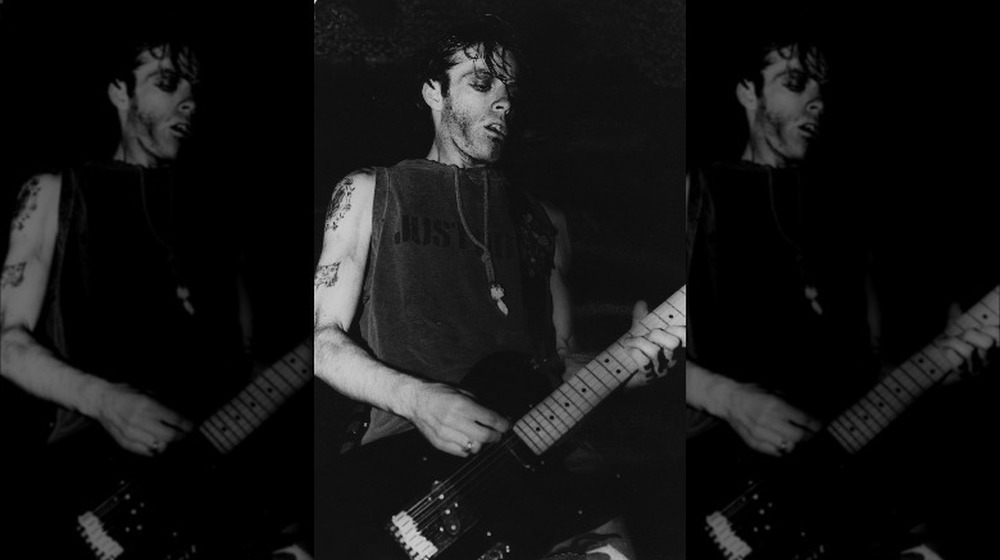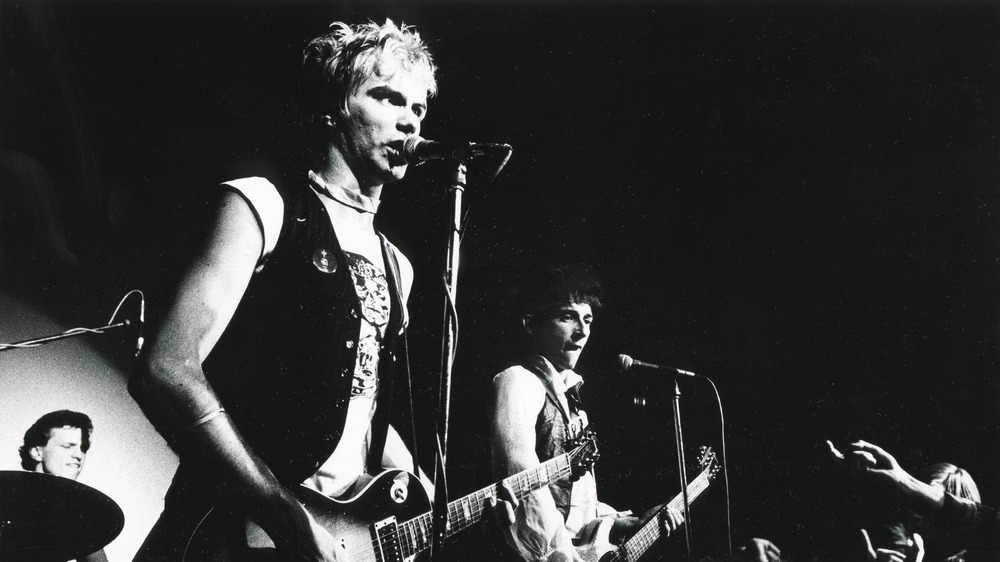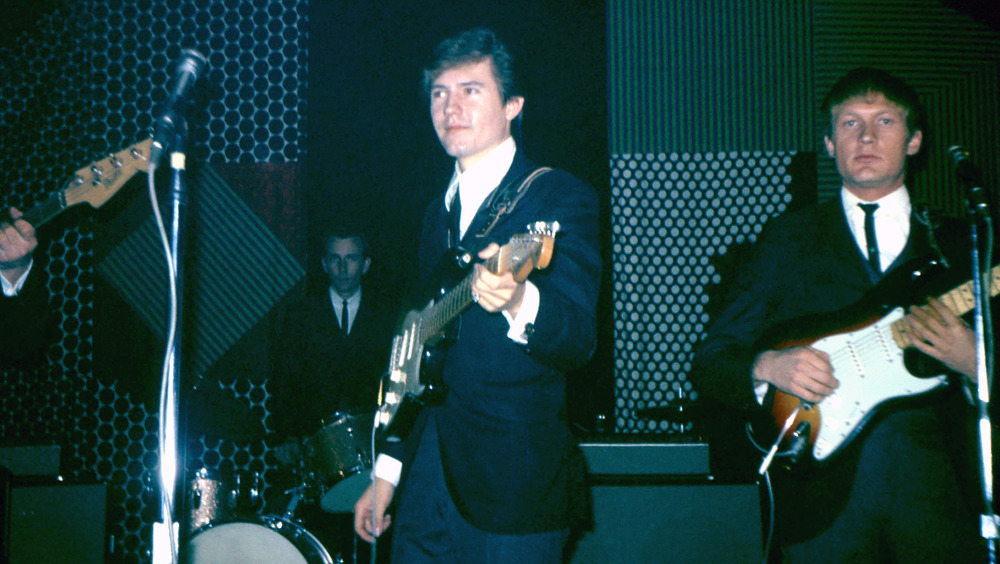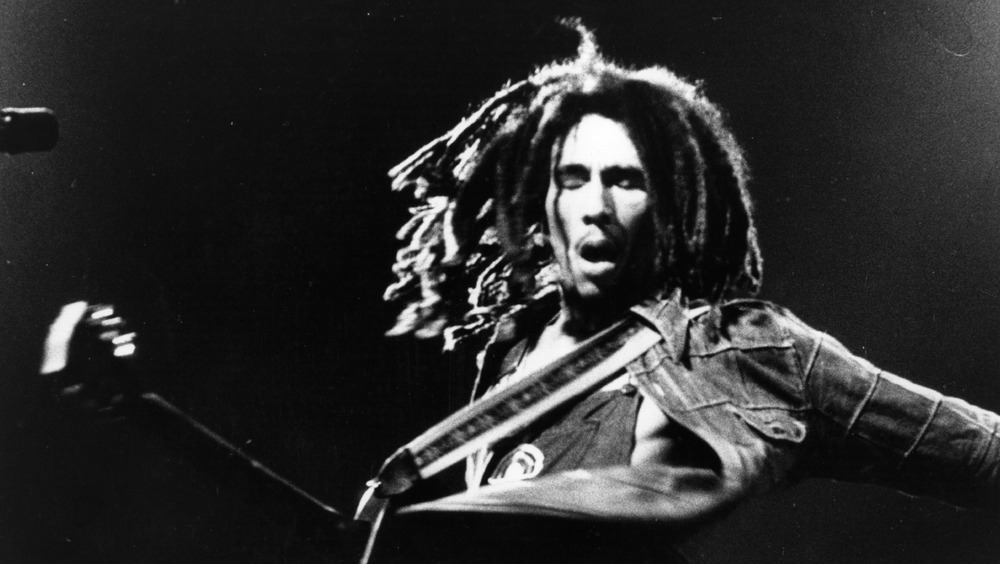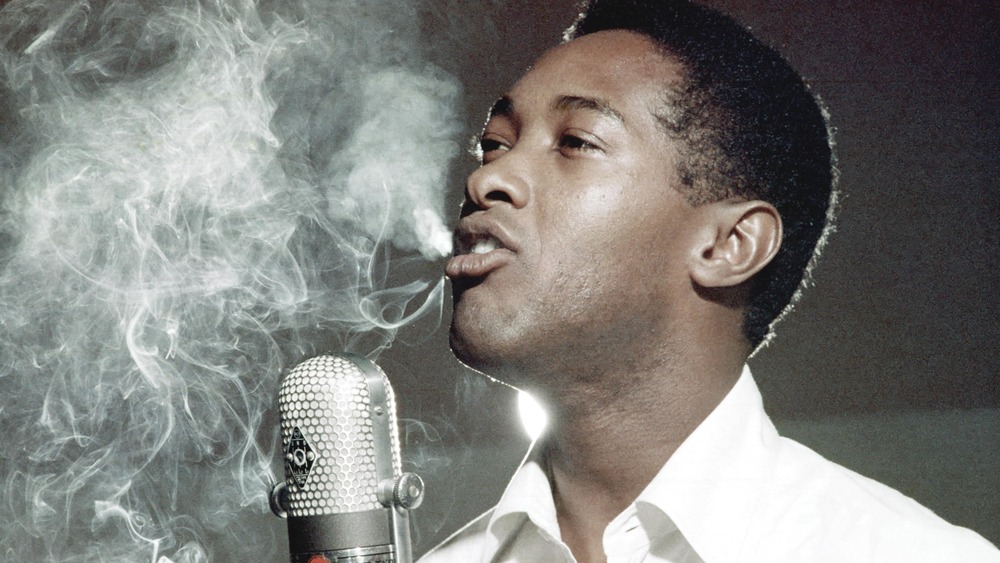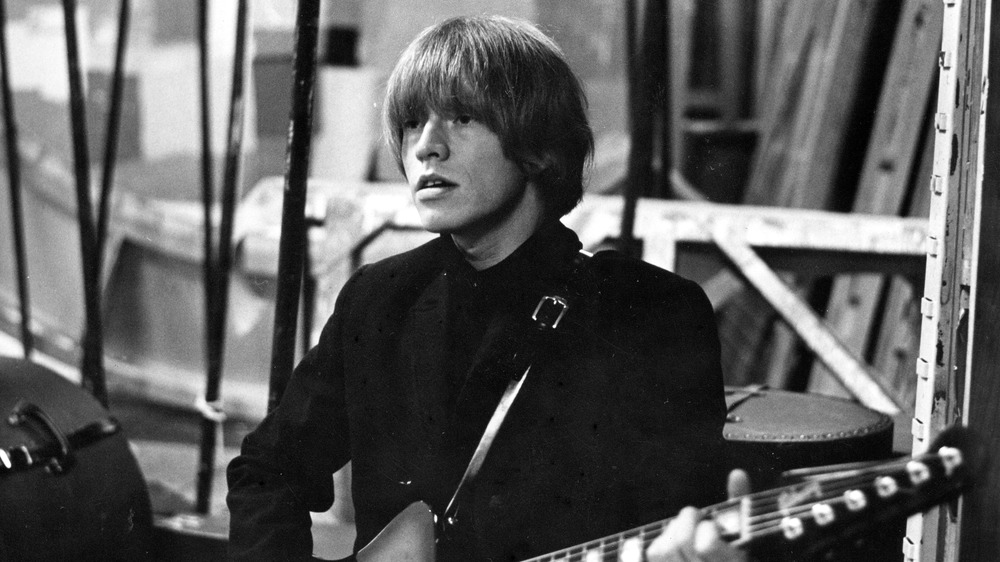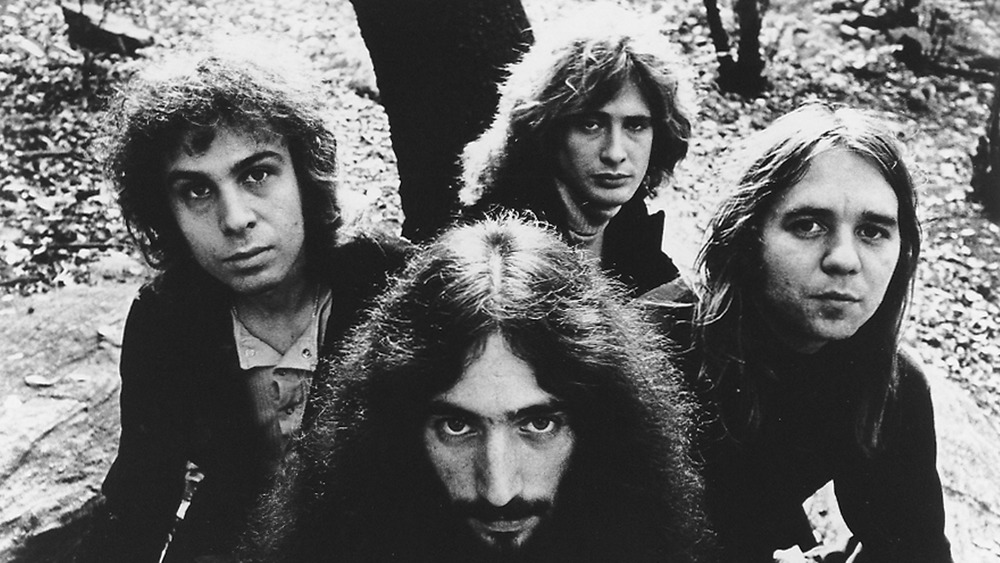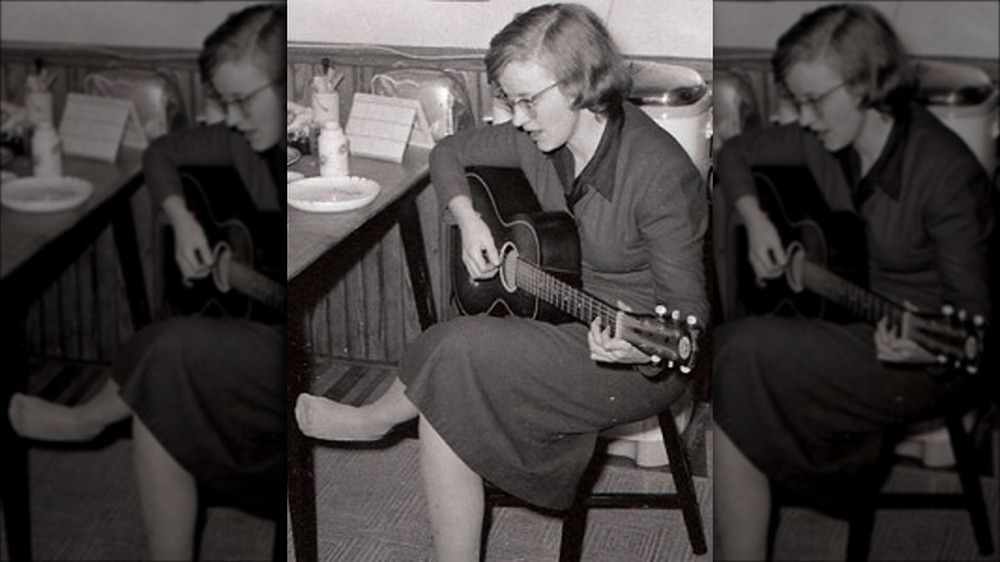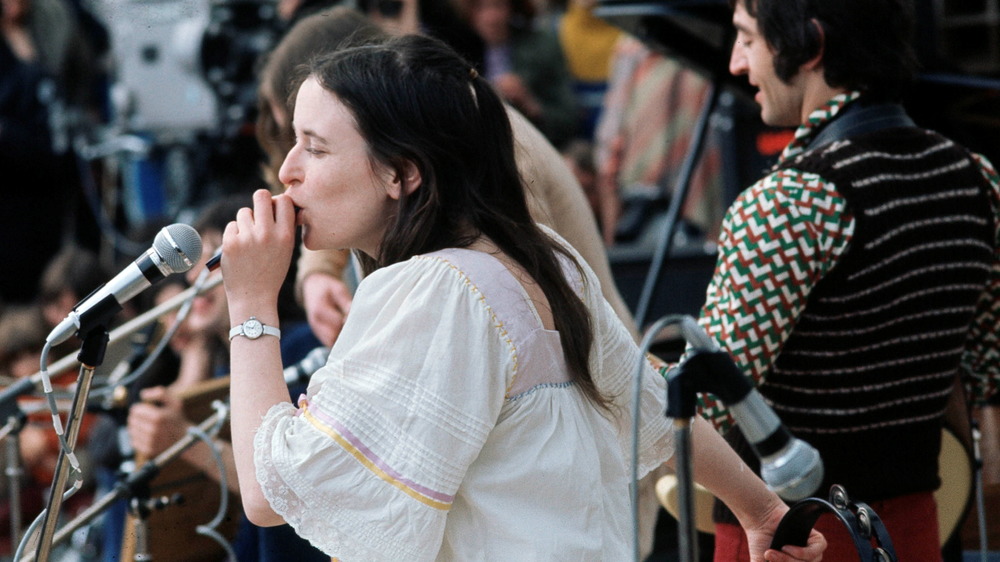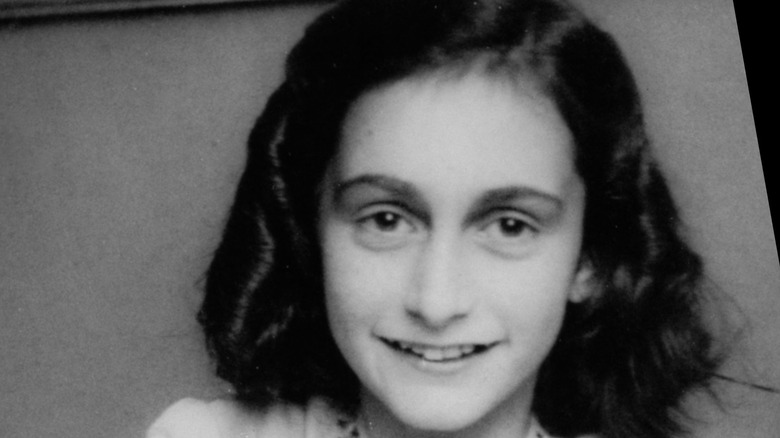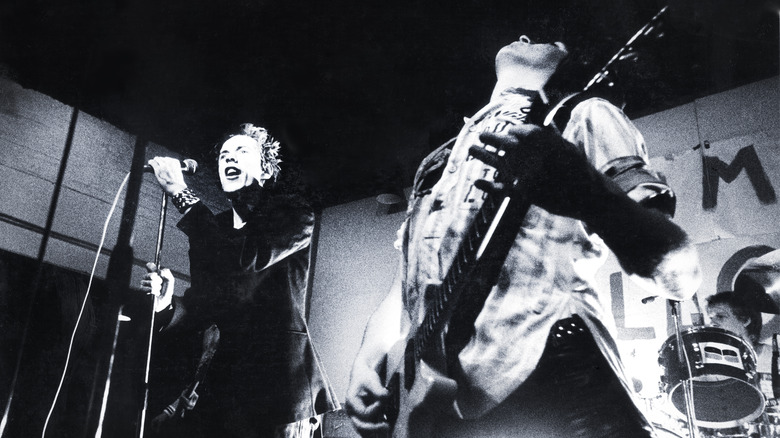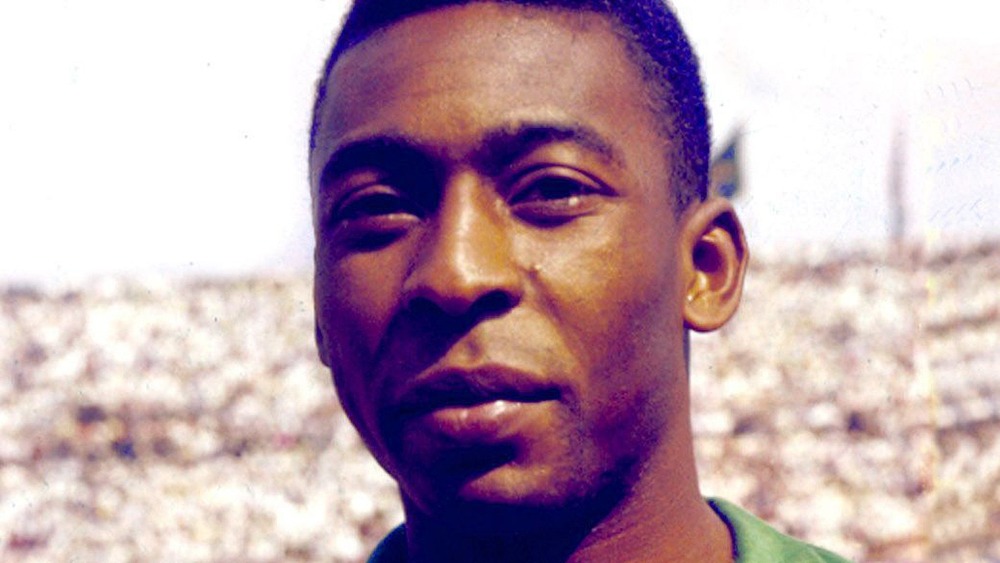
The Biggest Mysteries In Classic Rock Still Unsolved Today
Rock and roll has been a powerful cultural force for more than half a century. Over the course of that half-century, plenty of larger-than-life personalities have used the power of music to create over-the-top personas, blurring the lines between reality and myth. It’s easy to think of rock stars as superhuman, larger-than-life figures, so it’s not terribly surprising when they’re involved in crazy mysteries.
Some of these mysteries are just more myth-making, like believing that Elvis Presley faked his death and is still living somewhere under an assumed name. But some rock mysteries are very real and have resisted being solved for years or even decades. If these situations involved regular people, they wouldn’t be nearly as notable. But once you add in the glamour and decadence of the rock and roll image, they become mythological. Rock stars strut outside the normal world, after all. They do things normal people can’t, that normal people aren’t allowed to. And they do them with style and panache. That lends credence to the possibility that the mysteries surrounding them also involve situations beyond normal understanding, and that makes them irresistible.
These puzzles may never be solved, but they’ll always be fascinating. Here are the biggest mysteries in classic rock still unsolved today.
The disappearance of Richey Edwards
Back in 1995, the Manic Street Preachers were on the cusp of greatness. Melding punk, classic rock, and alternative sounds into a thick guitar sound, the band’s politically charged lyrics brought frequent comparisons to their idols, The Clash. Richey Edwards, the damaged, gorgeous rhythm guitarist and lyricist, quickly became the focus for fans of the group. Edwards struggled with mental health issues, substance abuse, and self-harm (famously carving the phrase “4 REAL” into his arm while doing a live interview). But it was exactly that damage that lent his passionate, angry lyrics the emotional weight that resonated with fans.
Then, as reported by The Independent, Edwards vanished. On February 1, 1995, he checked out of his hotel, due to meet up with his bandmates to begin a promotional tour. He got into his car and drove to his home, Wales. He was never seen again.
His car was found near a bridge notorious as a popular site for suicides, and Richards’ mental health was famously fragile. But his body was never found, and toll records show he drove over the bridge early in the morning. Fans began speculating that Edwards had faked his own death, noting that his uncle had vanished for a decade when Edwards had been young, something that had fascinated the musician. We may never know what actually happened, but Edwards was declared officially dead in 2008.
The death of Johnny Thunders
The New York Dolls were ahead of their time. Formed in 1971, this proto-punk band never quite broke through to huge success but has grown to be one of the most influential bands of the 1970s. Substance abuse and fading success tore the band apart by 1976, however, leaving the members to pursue their own careers.
Guitarist Johnny Thunders, who had become a poster boy for punk chic, struggled. As detailed by Louder, the heroin-addicted guitarist descended into addiction hell for years, squandering his potential and losing his family. Then he pulled himself together in the 1980s and seemed to be poised for a serious comeback — only to be diagnosed with leukemia and given months to live. He moved to New Orleans intending to record one final epic album — but he never got the chance. As Loudwire reports, Thunders was found dead in his apartment on April 23, 1991. An addict with terminal cancer, his death from an overdose seemed plausible.
But some think he was murdered. For one thing, the apartment had been ransacked. For another, the toxicology report revealed that the level of drugs in his system wasn’t enough to have killed him. And his body was found under a coffee table, folded into a “pretzel” shape.
The disappearance of Jim Sullivan
In rock and roll, as in all performing arts, we only hear about the success stories and the abject failures. The many, many artists who land somewhere in between, never attaining any sort of breakthrough success, remain largely obscure. So it is with Jim Sullivan, who built up a dedicated fan base in the late 1960s and early 1970s as an indie country-rock singer-songwriter but never “made” it. Whether or not his decision to move to Nashville for a fresh start would have yielded that breakthrough remains unknowable, however, because he vanished on the way there.
As reported by Ultimate Classic Rock, after releasing his debut album U.F.O. in 1969 and a self-titled follow-up in 1972, Sullivan grew increasingly frustrated and developed a drinking problem. He thought relaunching his career in Music City would be a good idea, so he packed up his VW Beetle on March 4, 1975, and set off for Tennessee. Along the way, he was pulled over and given a sobriety test but passed and decided to check into a hotel for some sleep. But the room appeared undisturbed when investigators opened it up — and the key was locked inside. Sullivan’s car was found 26 miles away in the middle of the desert, near a working ranch, locked and containing his possessions. He was never seen again, but his manager claims he once talked about disappearing from his life by walking out into the desert.
The death of Bobby Fuller
If you’re not familiar with the name Bobby Fuller, you probably know his most famous song: “I Fought the Law,” a staple of classic rock set lists across the country. Fuller didn’t write the song, but his Texas-flavored rockabilly version was a smash hit in 1966, making him and the Bobby Fuller Four overnight sensations. Fuller’s purely American style of rock was a contrast to the increasingly psychedelic British style popularized by the Beatles, and he was poised to be a superstar.
Then, on July 18, 1966, Fuller was found dead. His body was found in his mother’s car, parked outside his apartment, with a plastic hose and a gas can. It initially seemed like an obvious suicide — until the details started to come out.
As note by The Guardian, the car hadn’t been there half an hour before the body was found, but Fuller had been dead for some time — his body was in an advanced state of rigor mortis. This suggested he’d been moved from where he’d actually died. No one seriously investigated his death, but there are plenty of theories. The most plausible involves his record label’s deep association with the Mafia, suggesting that Fuller might have fallen afoul of organized crime.
Who's so vain?
One of the few enduring rock mysteries that doesn’t involve death or disappearance is the truth behind Carly Simon’s famous 1972 song, “You’re So Vain.” Ever since the song hit the charts, people have speculated about the specific man she’s singing about — the man who’s so vain he probably thinks the song is about him.
That speculation went on for more than 40 years before it was partially solved. As reported by The Guardian, Simon confirmed a few years ago that the second verse of the song (“You had me several years ago …”) is 100-percent about Warren Beatty. This confirmed years of suspicion that the notorious womanizer was the man behind the song — but Simon’s insistence that he’s just the inspiration for the second verse means there are two other men who have yet to be identified.
Simon has said that the mystery man who inspired the first verse of the song actually inspired the whole idea. Originally, the song was called “Bless you, Ben” and had a whole different lyric and tone. When she saw a famous celebrity arrive at a party, someone remarked that he looked like he was stepping onto a yacht — and Simon ran with the idea, and a classic song was born.
Simon has since refused to offer any more clues. Billboard reports she won’t reveal the men’s identities until they figure it out for themselves.
The attempted murder of Bob Marley
Reggae legend Bob Marley died in 1981 from cancer. But five years before that, someone made a dramatic (and dramatically incompetent) attempt on his life — and to this day no one knows why. As reported by Rolling Stone, on December 3, 1976, a group of men wearing masks and carrying guns broke into Marley’s house. They opened fire but somehow mostly missed Marley, shooting his manager Don Taylor multiple times in the chaos. Marley and his wife, Rita, were also wounded but not nearly as badly.
Jamaica’s politics at the time were violent and entwined with the music industry — both the ruling People’s National Party (PNP) and the rival Jamaica Labour Party (JLP) attempted to associate themselves with Marley. PNP hired guards to patrol Marley’s home, but those guards were mysteriously absent that night, leading some to wonder if the PNP ordered a hit. On the other hand, some of Marley’s friends were in deep debt to local gangsters, and he was helping to pay the debts for soccer player Skill Cole, so Marley was directly involved with shady dealings and might have invited trouble on himself.
No real investigation was ever performed, and to this day, no one knows for sure who tried to kill Bob Marley — or why.
Elliott Smith's death
Elliott Smith was a classic singer-songwriter who used production techniques to layer his sound, making his whispery vocals about pain and loss as powerful as a full-throated howl. After his song “Miss Misery” from the Good Will Hunting soundtrack was nominated for an Oscar for Best Original Song in 1998, his career was poised to explode.
Five years later, he was dead. As reported by The Guardian, Smith’s girlfriend Jennifer Chiba says she’d locked herself in the bathroom (they’d been arguing) and then heard a scream. When she ran out of the bathroom, she found Smith standing there with a knife in his chest. She claims she ran to him and pulled out the knife, and he collapsed. She called 911, and Smith died a short time later in the hospital. A note was found that read, “I’m so sorry-love, Elliot God forgive me.”
Smith had struggled with substance abuse and his mental health issues his entire life (reading the lyrics to any of his songs makes his suffering very clear), so suicide initially seemed very plausible. But the details of his death don’t necessarily support suicide. The note, for example, misspells Elliott’s name. There were no “hesitation wounds” typically found in self-stabbings, and the coroner’s report couldn’t rule out homicide. Many of Smith’s fans openly accuse Chiba of murdering him, and as Yahoo! Entertainment reports, Smith’s death remains an open investigation.
Sam Cooke's death
By December 1964, Sam Cooke was one of the most successful singers working in America. His new album Ain’t That Good News was doing well, and writer Fred Goodman notes that it contained one of Cooke’s most famous songs, “A Change is Gonna Come,” a song that became a major part of the Civil Rights Movement.
Cooke died on December 11, 1964. No one argues that the incident leading to his death was bizarre, and no one argues that it wasn’t homicide — but as The Guardian notes, his death was officially ruled justifiable homicide, a conclusion that many people find difficult to believe.
According to History.com, the manager of the Hacienda Motel in Los Angeles, Bertha Franklin, claimed Cooke attempted to rape a young woman he’d forced into his room. (Writer Peter Guralnick notes that the woman, Elisa Boyer, actually did call the police to report this.) Cooke then burst into the motel’s office, nearly naked, and demanded to know where Boyer was. Franklin claimed she shot Cooke in self-defense. But singer Etta James — who was present when Cooke’s body was removed from the motel — claims his injuries were much more severe than what Franklin reported. This has caused some to speculate that Cooke might have been killed because of his growing activism or because of criminal elements who wished to control his growing fortune and song-publishing empire.
The drowning of Brian Jones
By 1969, Brian Jones was officially no longer in the band he co-founded, the Rolling Stones. But in truth, Jones hadn’t really been in the band for a long time. As Ultimate Classic Rock reports, he only performed on two songs on the band’s 1969 album Let It Bleed – and those contributions were hardly essential. Jones had fallen into a deep pit of drug addiction and estrangement from his bandmates, and he was fired in June.
A few weeks later, Jones was found dead in his pool. As noted by Ultimate Classic Rock, his death was ruled “death by misadventure,” which is an official way of saying he took a lot of drugs and fell into the water. But there’s a lot of evidence suggesting he might have been murdered.
NME reports that contractor Frank Thorogood has long been suspected of being involved in Jones’ death. Jones hired Thorogood to do work on his remote farm, but the two had a bitter falling out over money Thorogood claimed he was owed. The two had an altercation in the pool, and Thorogood reportedly entered the house shaking badly just as Jones’ body was spotted and acted very strangely once the musician was confirmed dead. Jones’ manager, Tom Keylock, claims his brother (a senior police officer) said that the police made mistakes in their investigation and decided to cover it up by supporting the accidental death conclusion. The case was briefly reopened in 2009 but then closed again.
Gary Driscoll's murder
Gary Driscoll (rightmost above) might not be a household name, but his death in 1987 is one of the most bizarre unsolved murders in classic rock history.
Driscoll was an accomplished drummer with a classic R&B style. He began a professional partnership with Ronnie James Dio in the 1960s, playing with Dio through a succession of bands that didn’t quite break through to major success. As reported by AllMusic, in 1975, Deep Purple co-founder and guitarist Richie Blackmoore asked Dio and other members of his band Elf (including Driscoll) to form a new band with him, the legendary early heavy metal act Rainbow. Blackmoore and Dio weren’t happy with the way their first album sounded, and Driscoll was fired.
Driscoll went on to play in a few more bands, but his fortunes faded. According to Rock and Roll Paradise, he took on some odd jobs and did some session drumming to pay the bills. People reports that in June 1987, Driscoll was found dead in his house in Ithaca, New York. Writer Jeremy Simmonds notes that Driscoll was known to dabble in drugs, that the murder was very likely drug-related, and that more than one person was involved. But there are indications that the murder was ritualistic and had occult trappings — including a persistent, if unproven, rumor that Driscoll was partially flayed. No one has ever been convicted of the crime.
Connie Converse's disappearance
Connie Converse remains an obscure musician, but she’s increasingly recognized as a singer-songwriter who was quite simply ahead of her time. Arriving in New York in the 1940s after dropping out of college, she moved into an apartment in Greenwich Village just as it was transforming into a focal point for artists of all kinds.
As The New Yorker recounts, Converse began writing songs on her guitar. Her style was unique, and her songs were complex and musically sophisticated. People were blown away, and after appearing at a local showcase in 1954, she found herself on television as a guest of CBS’ The Morning Show, hosted by Walter Cronkite. Things seemed to be happening for Converse … until they weren’t. Her music was too out-there, and the folk movement that might have propelled her hadn’t yet arrived. Frustrated, she left New York City in 1961 – around the same time some guy named Bob Dylan arrived.
Converse moved to Ann Arbor, Michigan, and took on teaching jobs and tried to write a novel. As Mysterious Universe reports, she began to drink and sank into a depression. In August 1974, she wrote a series of strange letters to her friends and family, talked about a fresh start, and then got into her car and drove off. She was never seen again, and her car was never found. Many wonder if she actually did pull an Elvis and start over under a new identity.
Licorice McKechnie's disappearance
The Incredible String Band formed in the 1960s and built a reputation as one of the most interesting folk-rock groups in history, merging ’60s psychedelia with traditional folk arrangements to create a unique sound. They were popular enough to be invited to appear at the famous Woodstock festival in 1969 — though as the BBC reports, the crowd’s reaction wasn’t great.
Christine “Licorice” McKechnie was romantically involved with co-founder Robin Williamson and became a primary singer and songwriter with the band during the height of their success. After she and Williamson broke up, she left the band in 1972. (The band broke up completely in 1974.) McKechnie performed sporadically over the course of the next 15 years but slowly faded from public view.
According to The Diversity of Classic Rock, by 1987, McKechnie was in the United States, and the last time anyone saw her, she was preparing for a trek through the Arizona desert — although her sister claims she was in contact with her in 1990. Either way, no one has heard from or seen Licorice McKechnie in at least three decades, and no one has any idea what happened to her. She simply vanished into thin air.
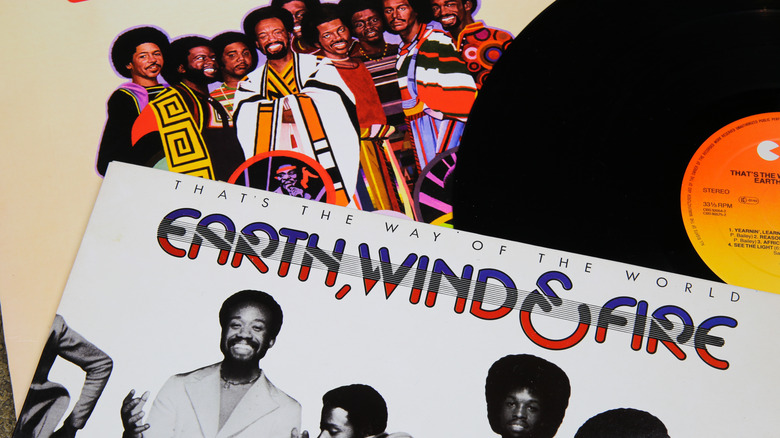
Here's Why Earth, Wind & Fire Sang About The 21st Of September

The Duran Duran Album That You've Never Heard
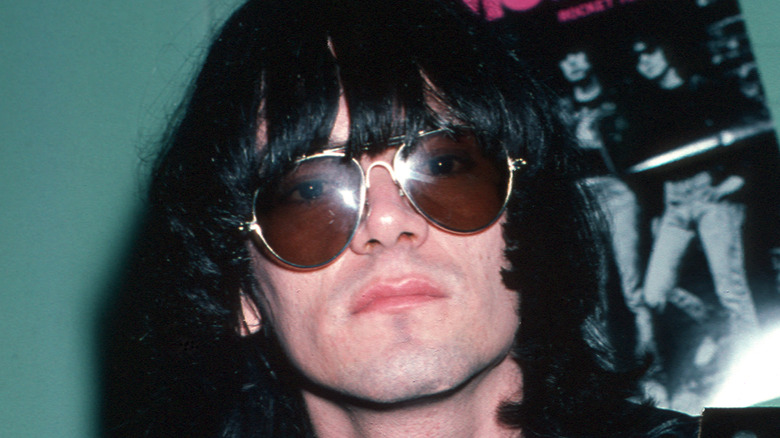
The Tragic Truth About Dee Dee Ramone's Childhood

The Real Reason William Goldsmith Left The Foo Fighters
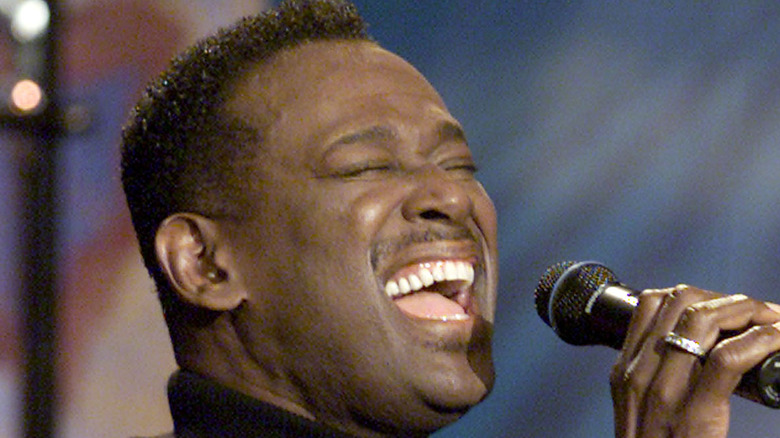
The Tragic Death Of Luther Vandross
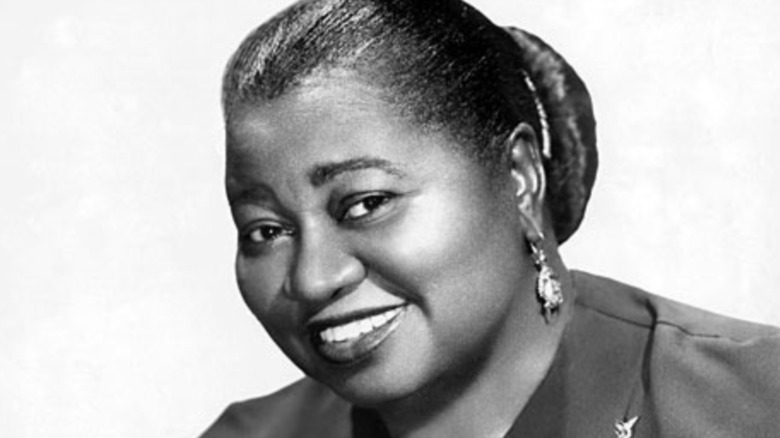
Why Hattie McDaniel's Oscar Win Was So Significant

The Truth About The Octavius Ship

The True Story Behind Elton John's 'Candle In The Wind'
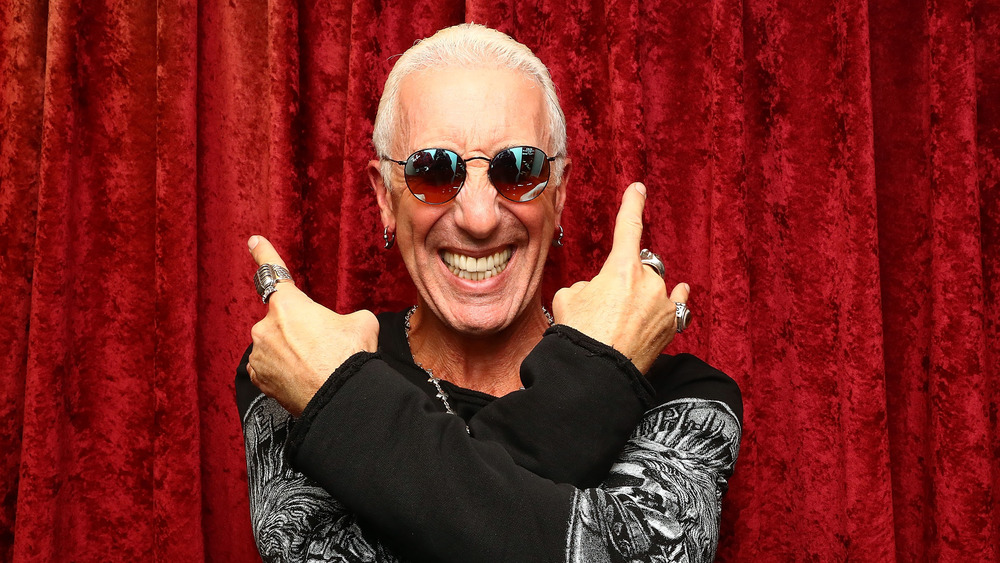
The Reason Twisted Sister's Dee Snider Decided To Record His Hit Christmas Song
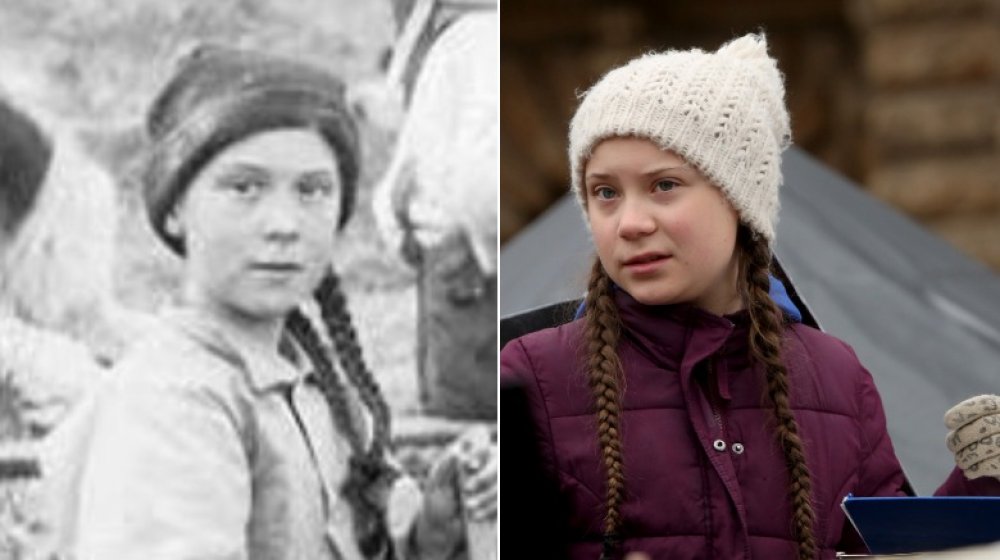
Do Doppelgangers Really Exist?
